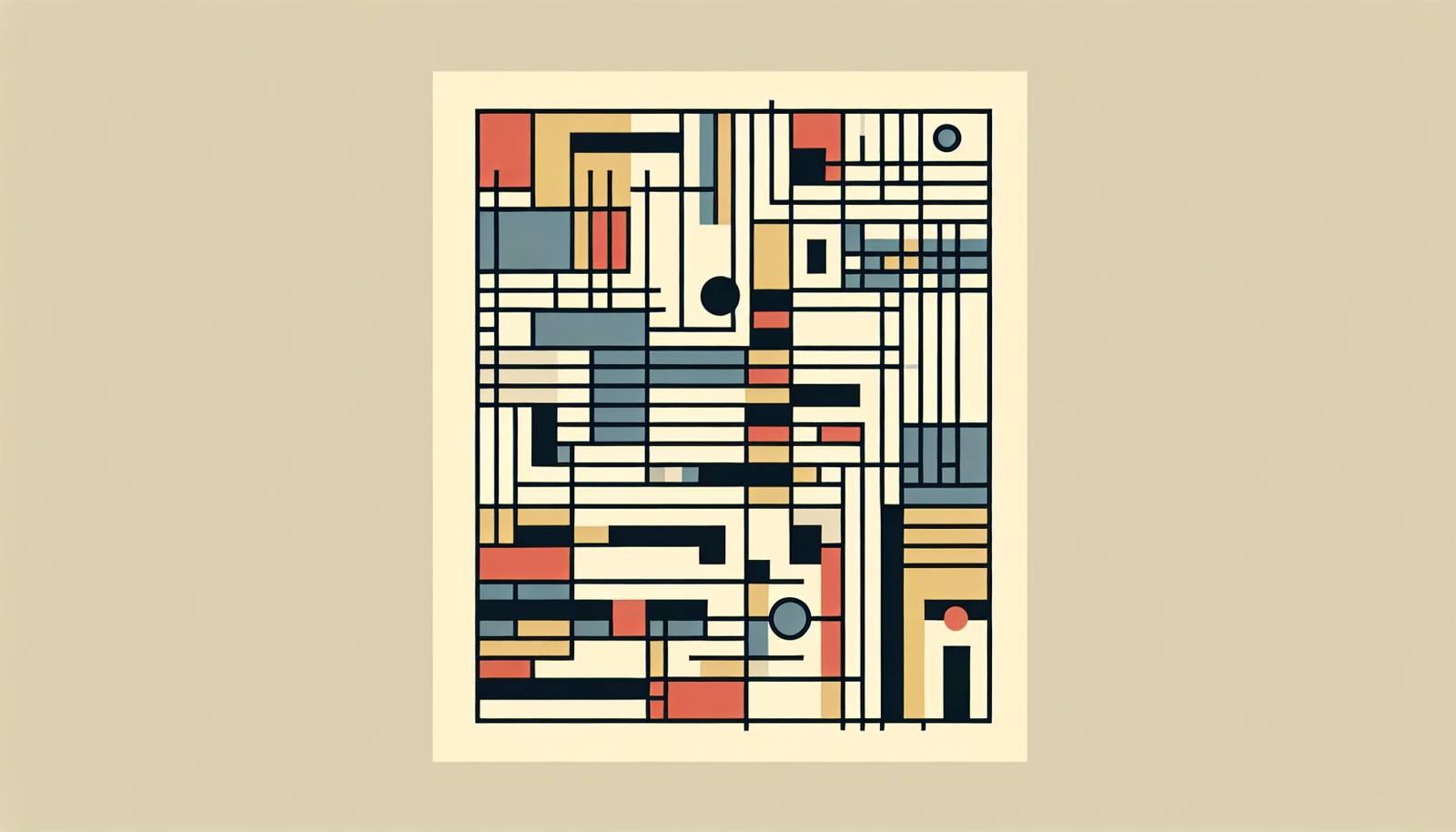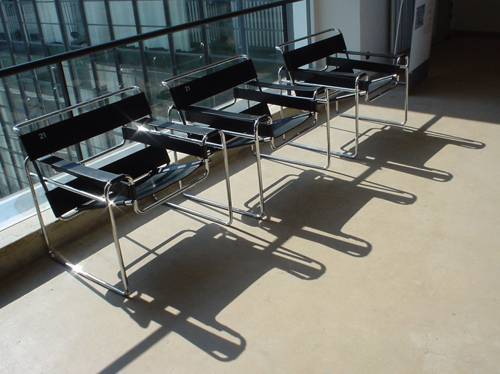
FAQ About The Influence of Bauhaus on Modern Typography

What is Bauhaus and how did it influence modern typography?
The Bauhaus was a German art school operational from 1919 to 1933 that combined crafts and the fine arts. It significantly influenced modern design, including typography. The Bauhaus emphasized simplicity and functionality, which led to the development of typefaces that were clean, legible, and devoid of unnecessary embellishments. This approach greatly influenced modern typography, promoting a minimalist aesthetic that is highly valued in contemporary design.

Why is the Bauhaus considered pivotal in the history of typography?
The Bauhaus is considered pivotal due to its revolutionary approach to design, advocating for simplicity, geometric shapes, and functionality. Typography under the Bauhaus influence rejected ornate and elaborate styles, favoring sans-serif fonts that are straightforward and easy to read. This shift had a lasting impact, shaping the direction of modern typography towards clarity and efficiency.

What are some examples of Bauhaus-influenced typefaces?
Some renowned typefaces influenced by Bauhaus principles include Futura, Helvetica, and Univers. These typefaces reflect the Bauhaus ethos with their clean, geometric lines and emphasis on readability. Futura, designed by Paul Renner, exemplifies the Bauhaus influence with its bold, modern look and efficient letterforms.

How did the Bauhaus movement's philosophy impact font design?
The Bauhaus movement's philosophy, which prioritized functionality and simplicity, impacted font design by moving away from ornate decoration to focus on purpose and readability. Font designers began creating sans-serif typefaces that embodied these principles, emphasizing practicality in visual communication.

What makes Bauhaus typography distinct from other design styles?
Bauhaus typography is distinct because of its minimalist and functional approach, using geometric shapes and sans-serif fonts to create a clean and modern look. Unlike other styles that may use complex and decorative elements, Bauhaus typography eliminates unnecessary details to enhance clarity and perception.

How has Bauhaus typography influenced digital typography?
Bauhaus typography's principles have carried over into digital design, influencing the creation of user-friendly interfaces and clear, legible fonts for screens. The emphasis on minimalism and functionality aligns well with digital design, which often prioritizes user experience and ease of reading on various devices.

Did the Bauhaus movement create any original typefaces?
Yes, the Bauhaus movement led to the creation of several unique typefaces. One notable example is the "Universal" typeface design by Herbert Bayer, which embodies the minimalist and functional principles of Bauhaus by using only lowercase letters and simple geometric shapes.

What role did typography play in the overall Bauhaus design philosophy?
Typography played a crucial role in the Bauhaus design philosophy as a means of clear communication. It was viewed not just as an aesthetic choice but as an essential tool for expressing ideas effectively and efficiently. This approach integrated typography seamlessly with other visual elements in design, making it an indispensable part of the Bauhaus legacy.

In what ways did the Bauhaus challenge traditional typography norms?
The Bauhaus challenged traditional typography norms by dismissing ornate, serif-styled fonts in favor of sans-serif designs, which were considered more modern and appropriate for industrial and mass production. This was a radical shift from the decorative and embellished typefaces popular before the Bauhaus era, paving the way for contemporary design standards.

How did Bauhaus typography support modernist ideals?
Bauhaus typography supported modernist ideals by emphasizing clarity, functionality, and the “form follows function” philosophy. By stripping away excess decoration and focusing on readability and simplicity, Bauhaus typography aligned with modernist principles that valued utility and aesthetics in harmony.

What was the impact of Bauhaus on graphic design beyond typography?
The Bauhaus's impact on graphic design extends beyond typography to include innovative approaches in layout, use of space, and color theory. Its influence encourages designers to pursue simplicity, efficiency, and cohesiveness in their work, principles that remain foundational in graphic design education and practice today.

Are there any modern design schools or movements influenced by Bauhaus typography?
Yes, modern design schools and movements continue to be influenced by Bauhaus, particularly its approach to typography. The Swiss Style, for example, adopted many Bauhaus principles, promoting clarity and readability through grid systems and sans-serif fonts. This influence can also be seen in many graphic design curriculums worldwide.

What are the characteristics of a Bauhaus-type font?
Characteristics of a Bauhaus-type font include a focus on geometric shapes, even weight distribution, simplicity, and a lack of serifs. These fonts often prioritize legibility and efficiency, aiming to convey information clearly and directly without superfluous details.

Why are sans-serif fonts associated with Bauhaus?
Sans-serif fonts are associated with the Bauhaus because they epitomize the movement's minimalist and functional ethos. Bauhaus designers preferred these fonts for their clean lines and modern appearance, which contrasted sharply with the ornate serif fonts prevalent prior to this period.

How did Bauhaus typography influence commercial design?
Bauhaus typography has vastly influenced commercial design by prioritizing readability and simplicity, principles that are crucial for brand recognition and effective advertising. Many companies choose Bauhaus-inspired typefaces to project a modern and professional image, which helps in establishing strong brand identity.

Did any specific Bauhaus designers specialize in typography?
Yes, several Bauhaus designers specialized in typography, most notably Herbert Bayer, who was known for his "Universal" typeface, and László Moholy-Nagy, who focused on integrating typography with photography and other media. Their work in typography helped solidify Bauhaus's lasting impact on modern design practices.

What is a common misconception about Bauhaus typography?
A common misconception is that Bauhaus typography is plain or boring due to its minimalist nature. However, its emphasis on form and function creates fonts that are not only aesthetically pleasing but also highly effective for communication, showcasing the power of simplicity in design.

How do Bauhaus principles apply to web design today?
Bauhaus principles apply to web design by encouraging designers to focus on clarity, functionality, and user experience. This means using straightforward typography, clean lines, and a well-organized layout to ensure that users can easily navigate and comprehend online content.

Has Bauhaus typography been adapted in new technologies?
Yes, Bauhaus typography has been adapted in new technologies, such as digital interfaces, mobile applications, and virtual reality platforms, where legibility and user experience are paramount. Its principles of simplicity and clarity are particularly well-suited to these evolving digital mediums.

How can learning about Bauhaus typography benefit contemporary designers?
Learning about Bauhaus typography can benefit contemporary designers by providing insights into foundational design principles that emphasize simplicity, functionality, and clarity. This knowledge can enhance a designer's ability to create compelling and effective visual communications, whether in print or digital formats.
